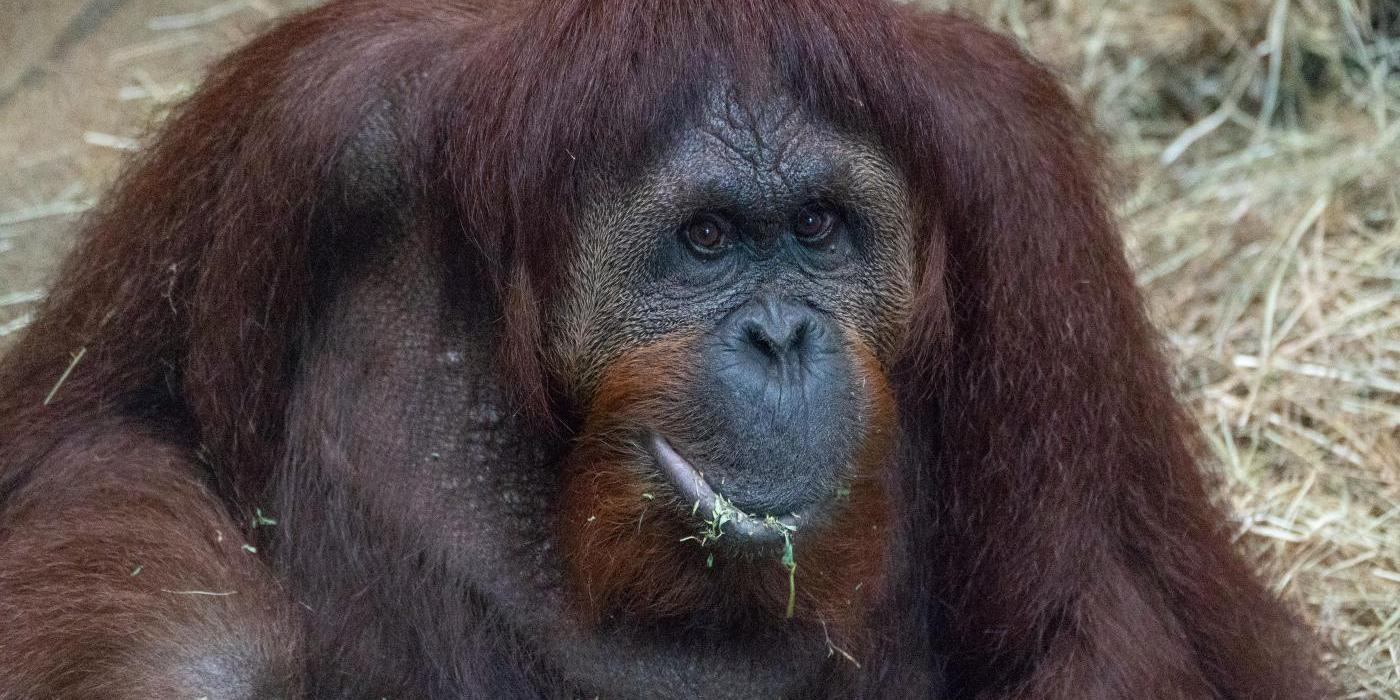Under (Blood) Pressure: Monitoring Heart Rates in Zoo Primates
How do you get an orangutan to sit still for an electrocardiogram? All it takes is a little patience and a lot of ingenuity! The Smithsonian’s National Zoo’s positive reinforcement training program enables primates to voluntarily participate in their own medical care without the need for anesthesia. Learn all about their efforts to monitor orangutan, gorilla and Allen’s swamp monkey heart health from primate keeper Erin Stromberg and veterinarian Katharine Hope.
In fall 2019, Stromberg received the Enrichment and Training Committee’s “Excellence in Animal Training” for her work on the primate health project.
Why is it important to know an animal’s heart rate?
Hope: Just as with humans, cardiac disease and diabetes can be present in non-human primates. Monitoring cardiac parameters and blood glucose in our animals is paramount to maintaining their health.
Stromberg: As an animal keeper, my primary goal is to provide the best welfare to the primates in our care. This entails being on the lookout for the latest techniques and best practices for assessing their health in the most accurate, timely and least stressful way possible.
Recently, we trained our gorillas and orangutans to use a new device that records their heart rate and electrocardiogram (ECG) information, allowing keepers and veterinarians to track their normal heart patterns and rates without the need for anesthesia.
At the same time, our male Allen’s swamp monkey Nub Armstrong has been an extremely cooperative patient, allowing us to take blood glucose and blood pressure readings from his tail voluntarily. Because anesthesia can impact these levels and push them out of their normal range, this training allows us to get more accurate values and improve our interpretation of Nub’s health status.
How do you take these readings?
Stromberg: At the Zoo, we are big advocates of positive reinforcement training, which gives our animals the option to choose to participate in their own care. These interactive training sessions also help build trusting relationships between the animals and us. They know that if they do the behavior asked of them correctly, they will receive a reward — usually a combination of food and an emphatic “good job” from their keeper.
To take the orangutans’ and gorillas’ ECG measurements, I hook my phone up to a pad with built-in electrodes. To get a proper reading, the apes must reach their fingers through the mesh, place them on the electrodes and hold them there for 30 seconds. While they sit still, I reward them with dilute juice from a squeeze bottle. They don’t seem to mind the phone at all — between keepers and visitors, they are very familiar with them!
Nub Armstrong’s process is a bit different. To get his blood pressure reading, I will put a cuff around the base of his tail and inflate it. Then, when it comes time from the glucose reading, we prick the skin of his tail to get a drop of blood. He is one of the most stoic and patient monkeys I’ve ever worked with, which makes him an ideal candidate for this training. No matter the situation, if there are peanuts in play, he is dedicated and focused on the task at hand.




